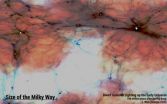(Press-News.org) ALLENDALE, Mich. — Men are more likely than women to slow their pace in the marathon, according to a new study led by a Grand Valley State University researcher. The findings were published in Medicine & Science in Sports & Exercise.
The study, led by Robert Deaner, associate professor of psychology at Grand Valley State, was based on 14 marathons that occurred in the U.S. in 2011, and it included almost 92,000 performances. On average, men ran the second half of the marathon 15.6 percent slower than the first half, whereas women slowed by an average of 11.7 percent. Although the extent of slowing varied at different races, the sex difference in pacing occurred at all 14 marathons. The sex difference was especially clear when considering runners who slowed by 30 percent or more — men were about three times as likely as women to experience such dramatic slowing.
The researchers decided to conduct the study because they hypothesized that marathon pacing might reflect decision making, and previous studies show that men generally make riskier decisions in many other situations.
"Sports scientists have long been interested in pacing, but they have focused on elite athletes and haven't considered the role of decision making," said Deaner. "We reasoned that decision making could be important for recreational runners — some have little knowledge about the demands of the marathon or their own capabilities, so it can be very easy to begin the early miles with an aggressive, unsustainable pace. We anticipated that men would be more likely to do this and, consequently, they'd be more likely to crash in the second half of the race."
While decision making could play a role, physiological factors might also be a primary factor explaining the greater slowing of men relative to women. Sandra Hunter, a co-author and professor of exercise science at Marquette University, said: "Women typically use more fat and less carbohydrate during endurance exercise. This should make them less likely to 'bonk' or 'hit the wall' because they are less likely to have their muscles depleted of glycogen."
The authors hope their results will spur future studies of pacing among non-elites. "We'd like to think we're putting pacing in non-elite athletes on scientists' radar," said Hunter. "It would be fantastic to complement our study — based only on halfway times and finishing times — with other kinds of data. This might include runners' training, self-knowledge, targeted pace, subjective feelings, and physiological measures. These kinds of studies might go a long way in helping runners achieve better performances and enjoy racing more."
Outstanding endurance performances almost involve even pacing, so the new findings suggest that women are superior to men in their race pacing. "Yeah, you can certainly look at this as a 'tortoise and hare' type of situation," said Deaner. "Men are crashing more frequently and that certainly isn't desirable. But I think it's premature to conclude that women are superior pacers. This is because an evenly paced race does not automatically indicate a well-paced one. Someone might be too conservative given his or her training and ability. So this question won't be truly answered until a future study investigates runners' training and their goals, along with their pacing."
Other key results were that pace slowing was generally far greater among slower runners and that the sex difference in pacing widened among slower marathoners. For example, among those who finished in about three hours, men slowed by 6.9 percent whereas women slowed by 5.5 percent, a 25 percent sex difference. By comparison, among those who finished in about five hours, men slowed by 18.8 percent whereas women slowed by 14.5 percent, a 30 percent sex difference.
The researchers also investigated whether racing experience was related to pacing and whether it might contribute to the sex difference. For more than 2,900 runners, they acquired information on racing experience by looking up runners on the athlinks website, which aggregates performances from many races. More years of racing experience and more previous marathons were both associated with more even pacing. Nevertheless, these experience effects were similar for men and women, so that controlling for experience did not eliminate the sex difference in pacing.
The researchers also showed that the sex difference in pacing held across age groups. It also held when adjusting women's performances by 12 percent to address men's greater maximal oxygen uptake and their typically faster performances.
INFORMATION:
The study was co-authored by Rickey Carter and Michael Joyner of the Mayo Clinic.
For more information, contact Robert Deaner at deanerr@gvsu.edu or Sandra Hunter at sandra.hunter@marquette.edu
Robert Deaner joined the Psychology Department at Grand Valley State University in 2006. He earned a doctorate in biological anthropology and anatomy at Duke University and conducted postdoctoral research in the Department of Neurobiology at Duke. His research focuses on applying evolutionary theory to human behavior, especially investigating sex differences in performance and motivation.
Sandra Hunter was recently promoted to full professor in the Exercise Science Program in the Department of Physical Therapy at Marquette University in Milwaukee, Wisconsin. She earned her doctorate in exercise physiology at the University of Sydney, Australia, and conducted postdoctoral research at the University of Colorado. Her research focuses on sex and age difference in motor control and muscle fatigue in healthy and diseased populations.
The tortoise and the hare: A sex difference in marathon pacing
2014-07-07
ELSE PRESS RELEASES FROM THIS DATE:
Slim down for the health of it and possibly reduce your hot flashes in the process
2014-07-07
CLEVELAND, Ohio (July 7, 2014)—Now women have yet one more incentive to lose weight as a new study has shown evidence that behavioral weight loss can help manage menopausal hot flashes.
The pilot study, which was published online last month in Menopause, the journal of The North American Menopause Society (NAMS), consisted of 40 overweight or obese white and African-American women with hot flashes, which are the most prevalent symptom of menopause. In fact, more than 70% of women report hot flashes during the menopausal transition, with many of these women reporting frequent ...
US scientists don't publish articles about potential role of innate variation in athletic performance
2014-07-07
ALLENDALE, Mich. — Compared to scientists working in other countries, U.S.-based scientists are underrepresented as authors of articles on the potential role of innate variation in athletic performance that are published in peer-reviewed science journals, according to Grand Valley State University researchers.
The findings are published in the online journal SpringerPlus.
The research, conducted by Michael P. Lombardo, professor of biology, and Shadie Emiah, a Grand Valley State graduate student, used information about the authors of 290 articles published in peer-reviewed ...
Of non-marijuana drug users in the ER, nearly all are problem drug users
2014-07-07
WASHINGTON —Of emergency patients who reported any drug other than marijuana as their primary drug of use, 90.7 percent met the criteria for problematic drug use. Among patients who reported cannabis (marijuana) as their primary drug, almost half (46.6 percent) met the criteria for having a drug problem, according to a study published online Thursday in Annals of Emergency Medicine ("Identifying Patients with Problematic Drug Use in the Emergency Department: Results of a Multi-Site Study.)
"Of patients who reported any drug use in the previous 30 days, nearly two-thirds ...
Sitting too much, not just lack of exercise, is detrimental to cardiovascular health
2014-07-07
Dallas – July 7, 2014 – Cardiologists at UT Southwestern Medical Center found that sedentary behaviors may lower cardiorespiratory fitness levels. New evidence suggests that two hours of sedentary behavior can be just as harmful as 20 minutes of exercise is beneficial.
The study, published in today's online edition of Mayo Clinic Proceedings, examined the association between fitness levels, daily exercise, and sedentary behavior, based on data from 2,223 participants in the National Health and Nutrition Examination Survey (NHANES).
Sedentary behavior involves low levels ...
Rats purposefully use their whiskers in different ways to help navigate in the dark
2014-07-07
VIDEO:
This is an example of the use of the whiskers for collision avoidance. Unexpected whisker contact
results in rapid deceleration of forward locomotion velocity and the animal orients to the...
Click here for more information.
The way rats use their whiskers is more similar to how humans use their hands and fingers than previously thought, new research from the University of Sheffield has found.
Rats deliberately change how they sense their environment using their ...
Small, but plentiful: How the faintest galaxies illuminated the early universe
2014-07-07
Light from tiny galaxies over 13 billion years ago played a larger role than previously thought in creating the conditions in the universe as we know it today, a new study has found. Ultraviolet (UV) light from stars in these faint dwarf galaxies helped strip interstellar hydrogen of electrons in a process called reionization.
The epoch of reionization began about 200 million years after the Big Bang and astrophysicists agree that it took about 800 million more for the entire universe to become reionized. It marked the last major phase transition of gas in the universe, ...
NASA satellites see Neoguri grow into a super typhoon
2014-07-07
From July 4 to July 7 Tropical Cyclone Neoguri strengthened from a tropical storm into a supertyphoon. NASA's Terra and Aqua satellites passed over the rapidly intensifying storm and provided forecasters with visible, infrared and microwave data on the powerful supertyphoon.
On July 4 at 0900 UTC (5 a.m. EDT) Neoguri had maximum sustained winds near 55 knots (63.2 mph/101.9 kph). It was located near 13.1 north and 141.4 east, about 207 nautical miles (238.2 miles/383.4 km) west of Andersen Air Force Base, Guam. It was moving to the northwest at 13 knots (14.9 mph/24.0 ...
The new atomic age: Building smaller, greener electronics
2014-07-07
(Edmonton) In the drive to get small, Robert Wolkow and his lab at the University of Alberta are taking giant steps forward.
The digital age has resulted in a succession of smaller, cleaner and less power-hungry technologies since the days the personal computer fit atop a desk, replacing mainframe models that once filled entire rooms. Desktop PCs have since given way to smaller and smaller laptops, smartphones and devices that most of us carry around in our pockets.
But as Wolkow points out, this technological shrinkage can only go so far when using traditional transistor-based ...
Study reveals protective role for specialized cells in intestinal and respiratory systems
2014-07-07
RIVERSIDE, Calif. – Ripping a page from the Star Trek script, specialized cells of the barrier that lines the inside of the intestines and airways of humans have invoked a biological version of Captain Kirk's famous command "shields up" as a first defense against invading microbes.
Research in the UCR School of Medicine laboratory of David Lo found that certain cells of the epithelium have a potentially important role in immune surveillance – creating an electrostatic repulsion field to microbial invasion.
The study is featured on the cover of the July issue of Infection ...
Expectant moms turn to 'Dr. Google' for pregnancy advice
2014-07-07
Pregnant women are using the Internet to seek answers to their medical questions more often than they would like, say Penn State researchers.
"We found that first-time moms were upset that their first prenatal visit did not occur until eight weeks into pregnancy," said Jennifer L. Kraschnewski, assistant professor of medicine and public health sciences, Penn State College of Medicine. "These women reported using Google and other search engines because they had a lot of questions at the beginning of pregnancy, before their first doctor's appointment."
Following the women's ...





